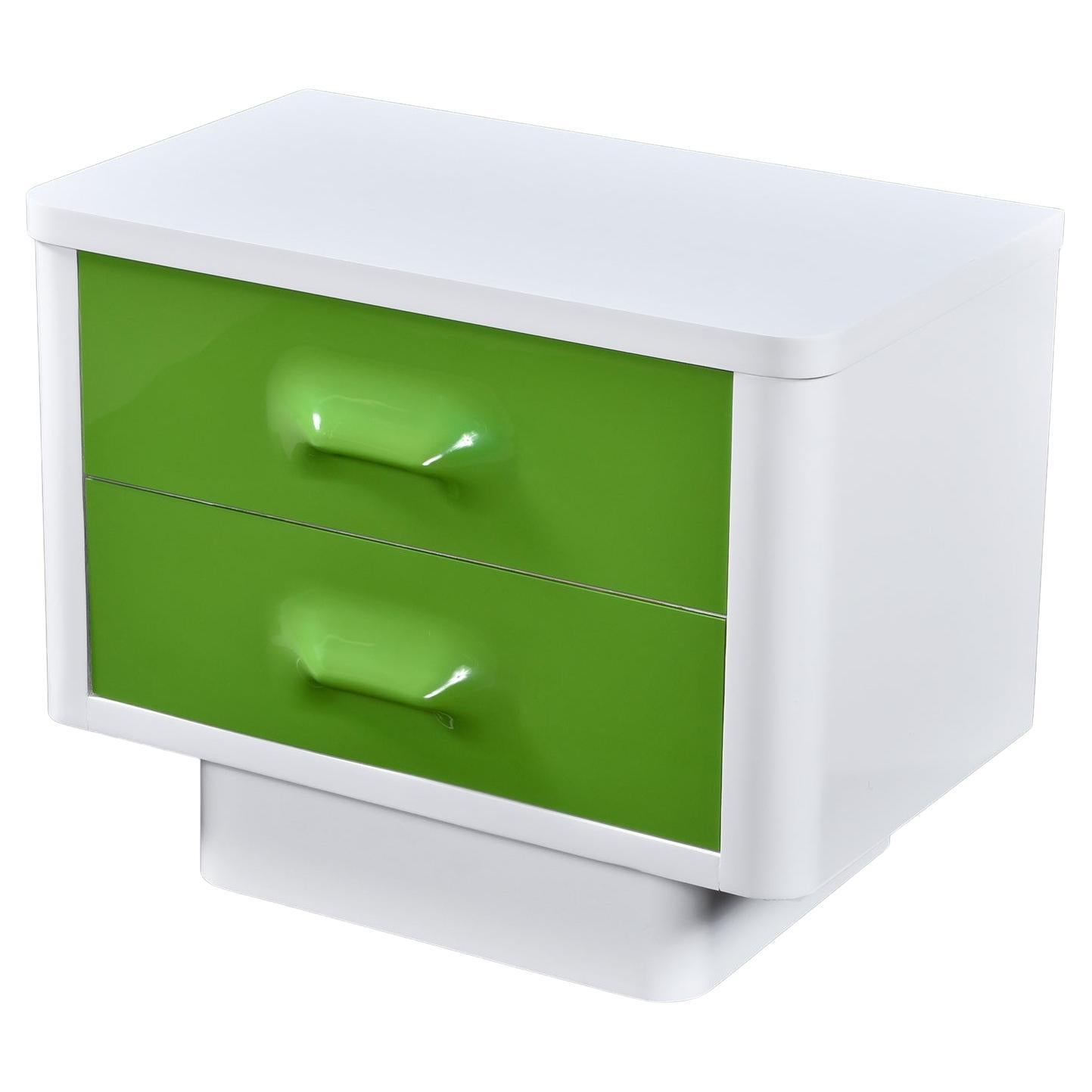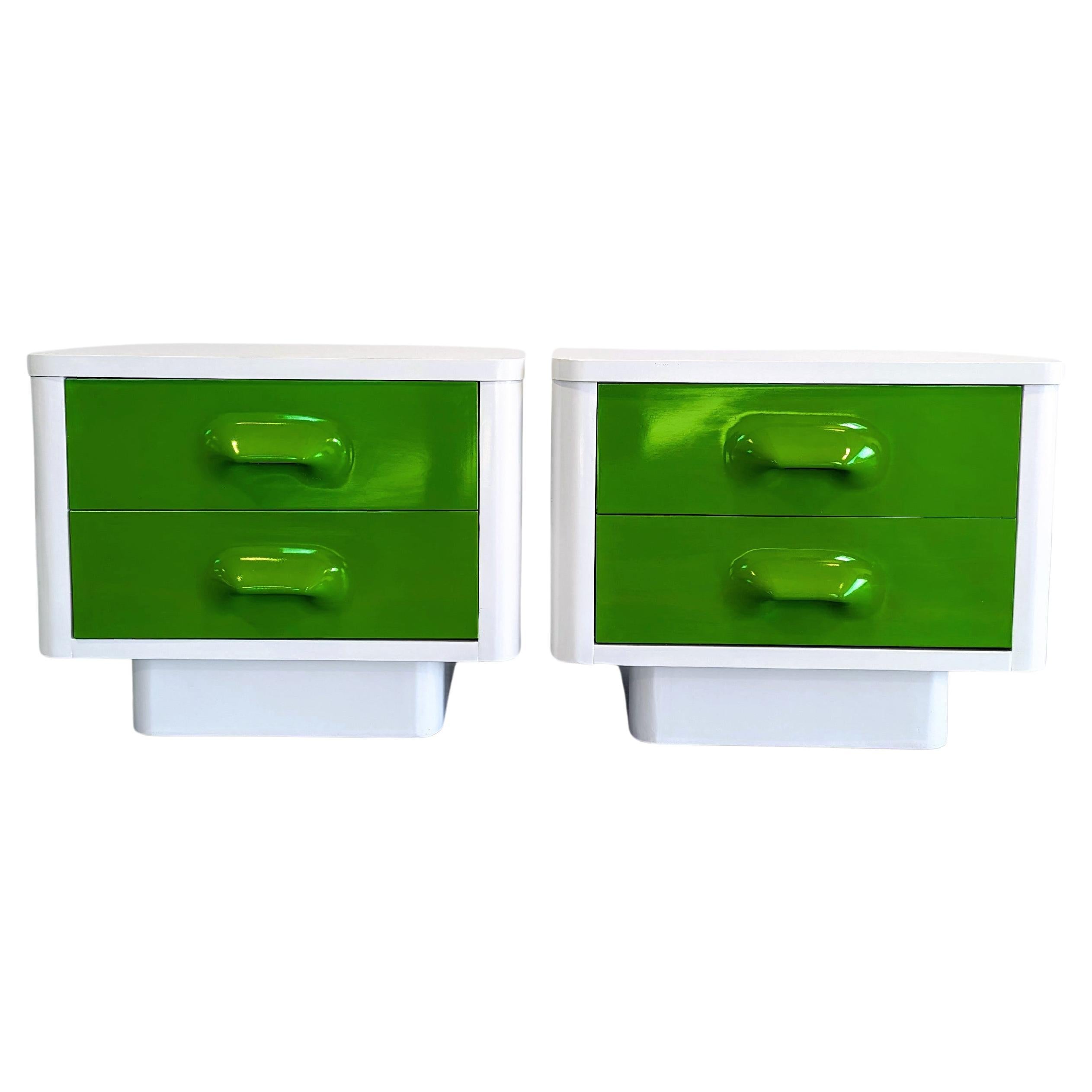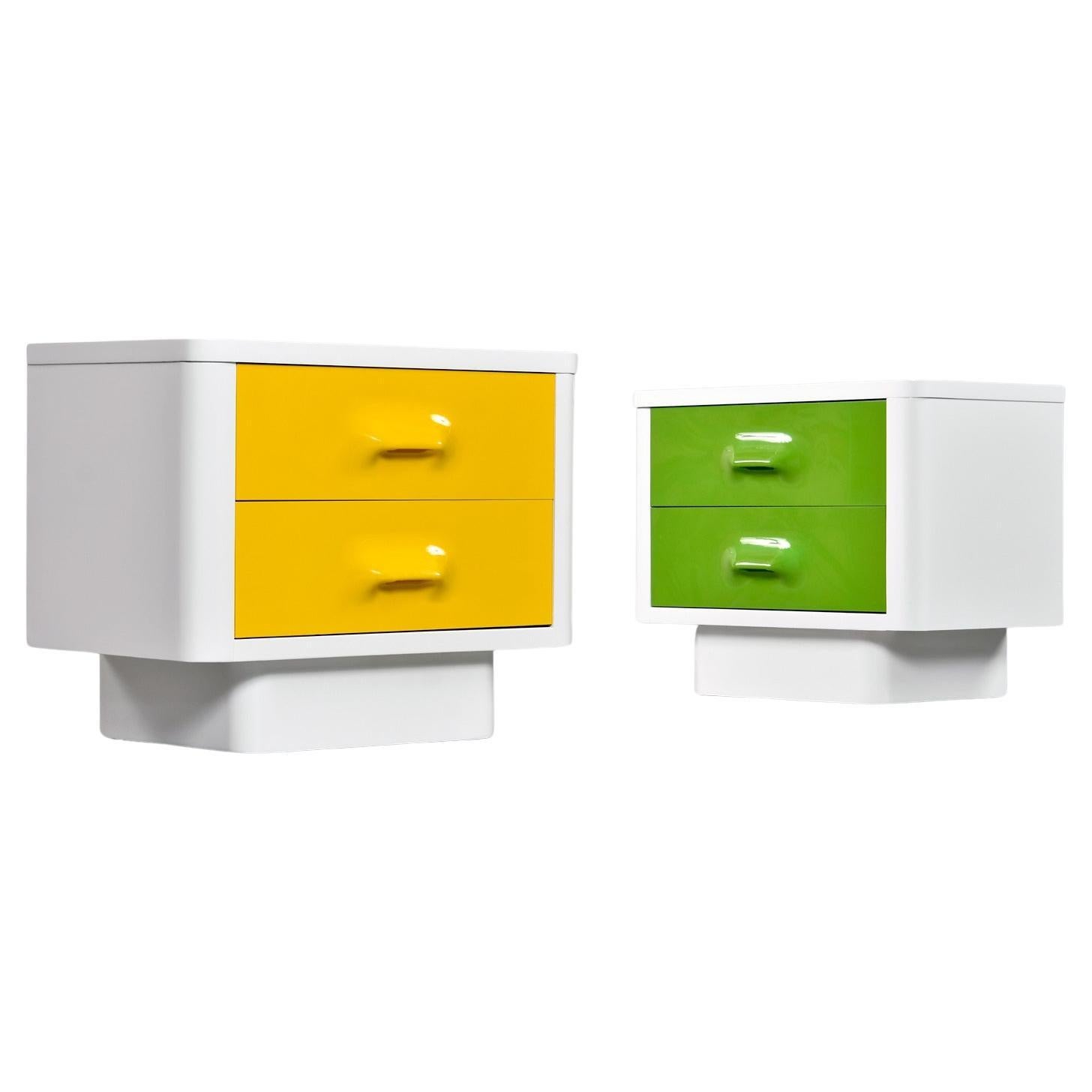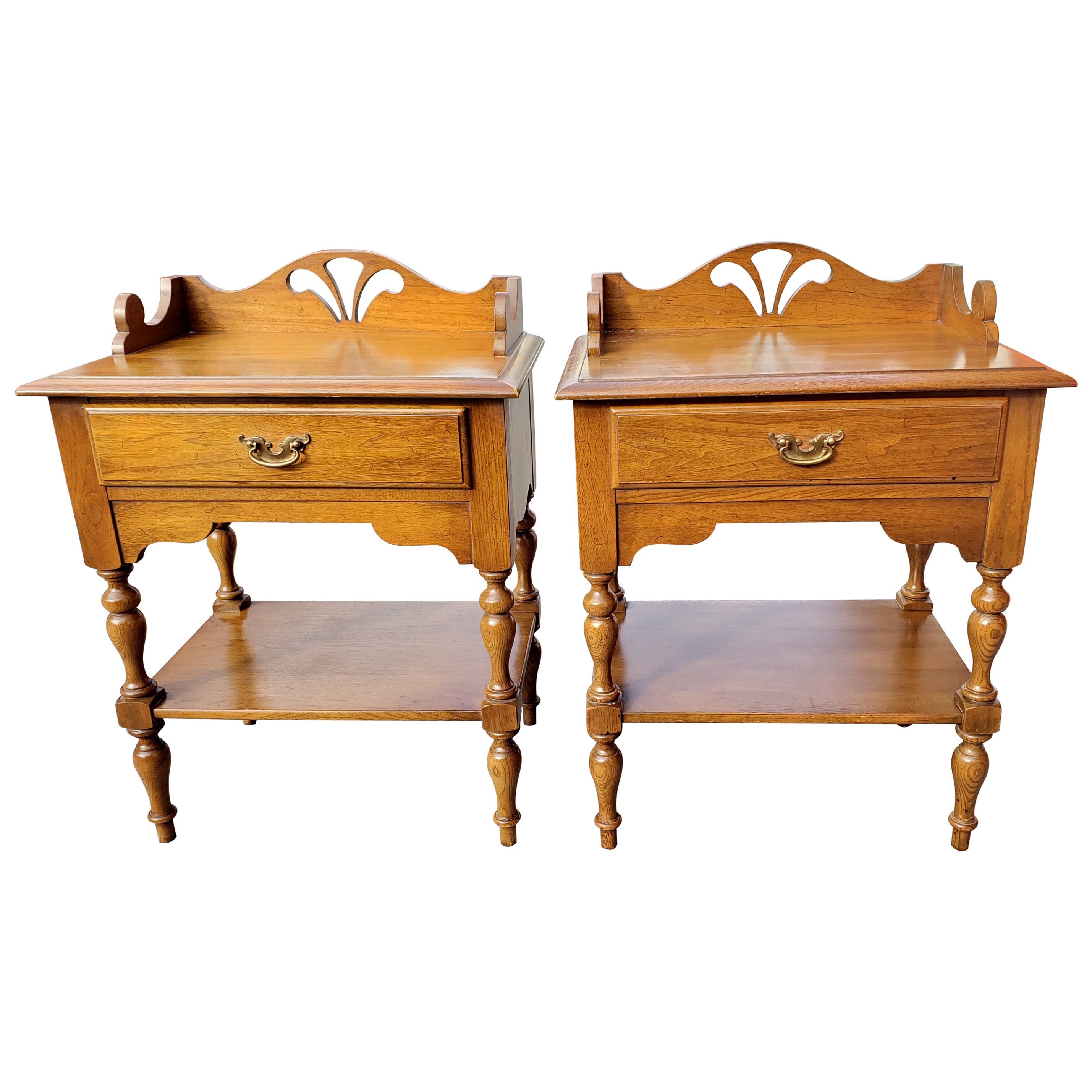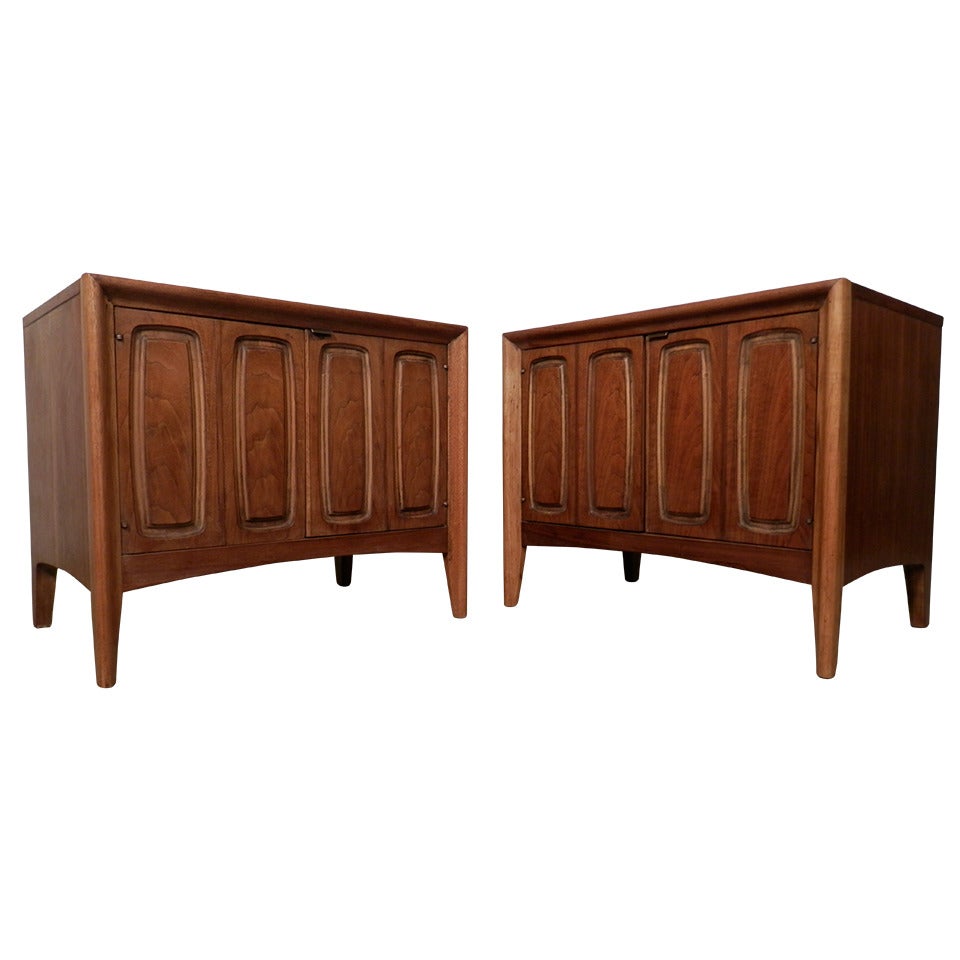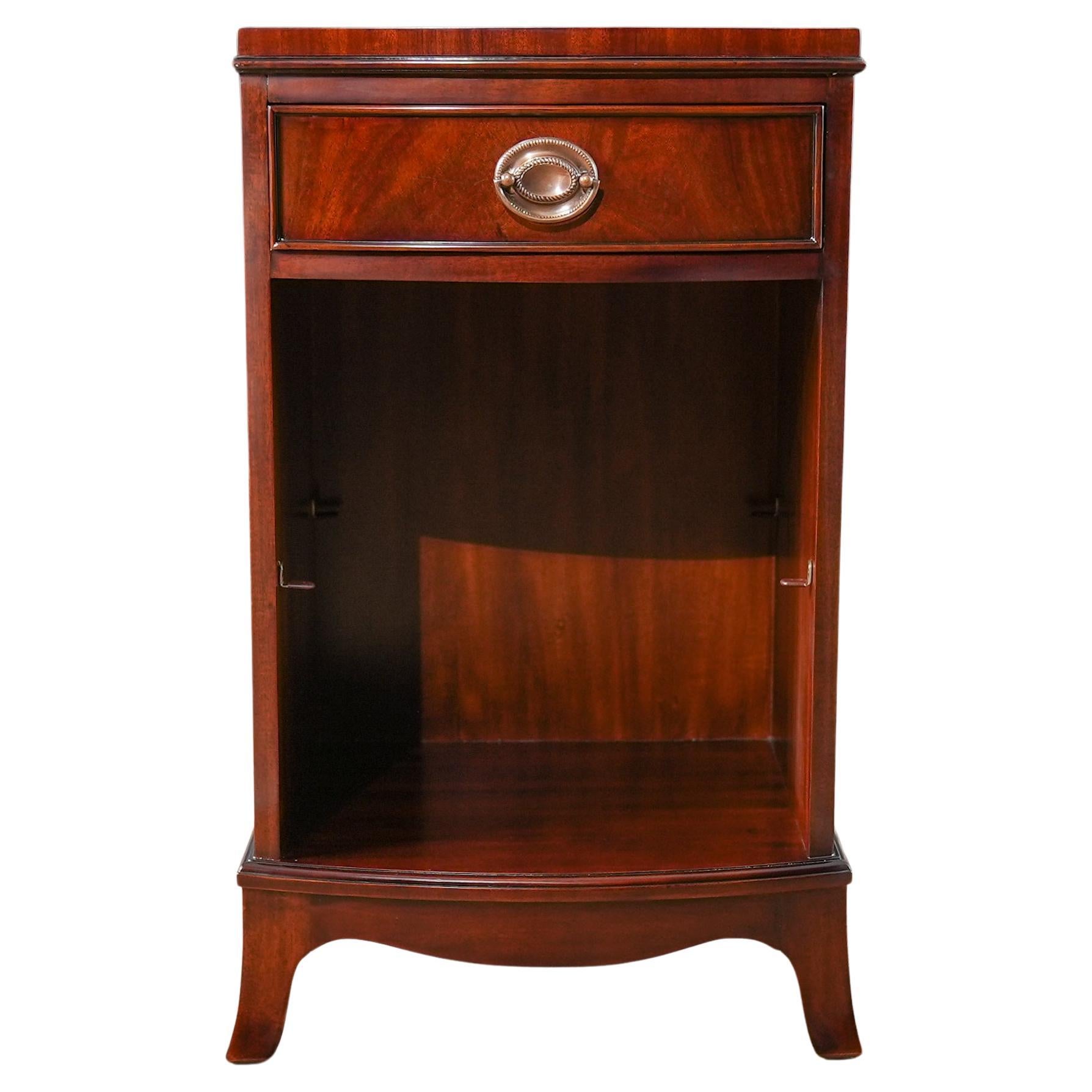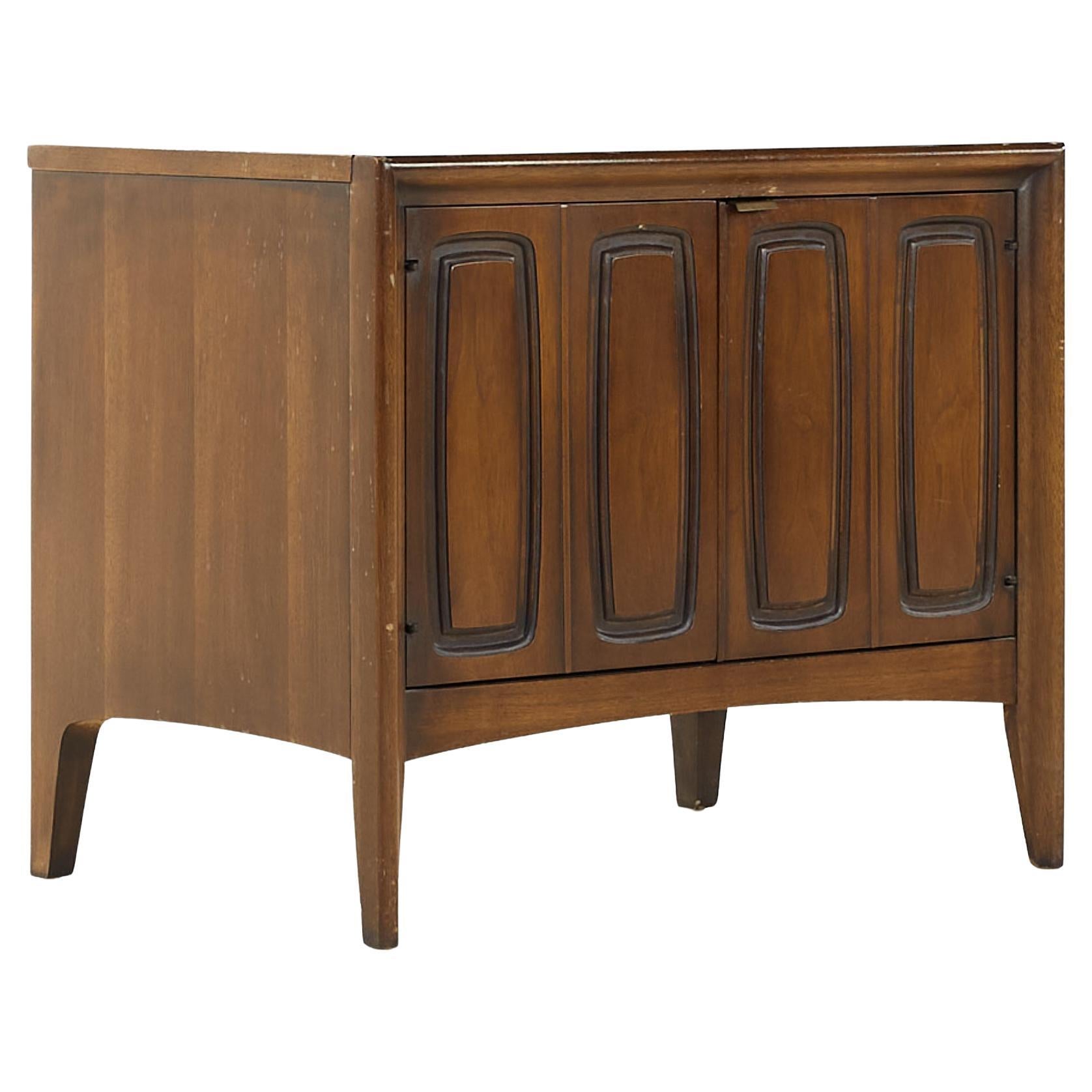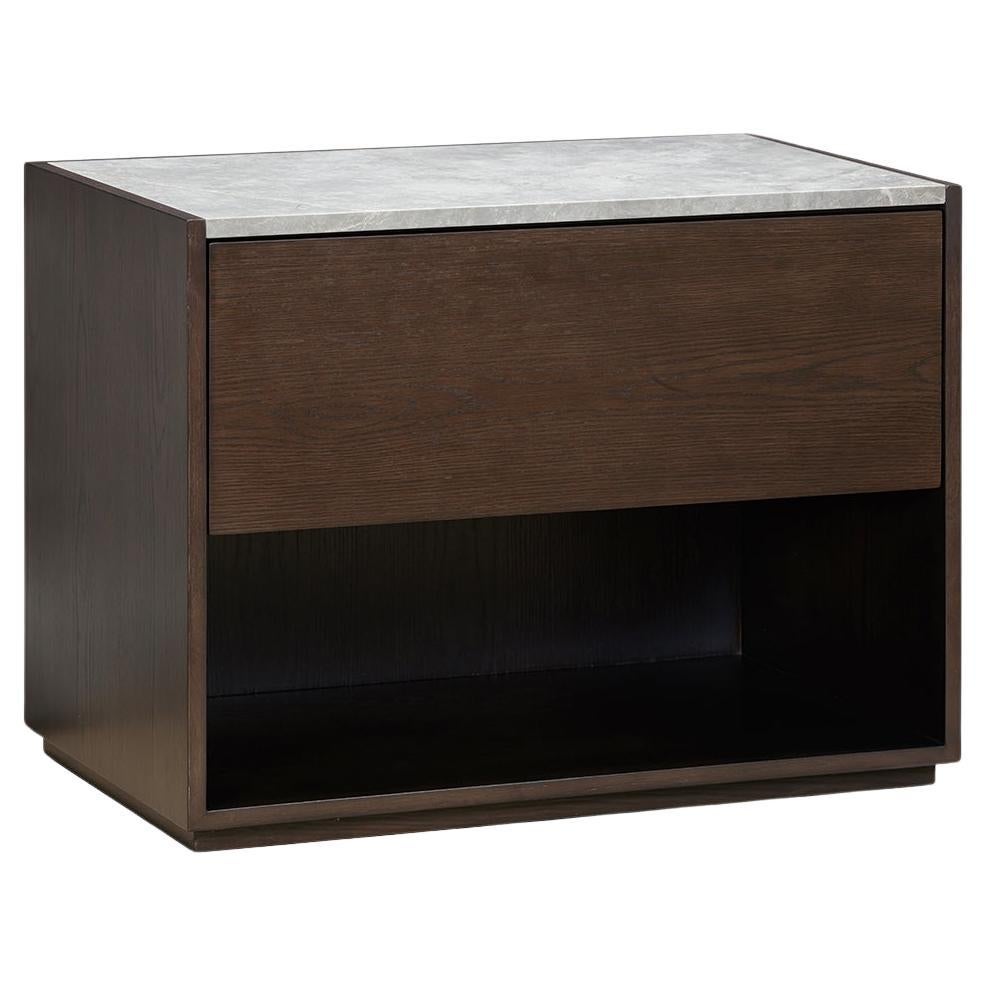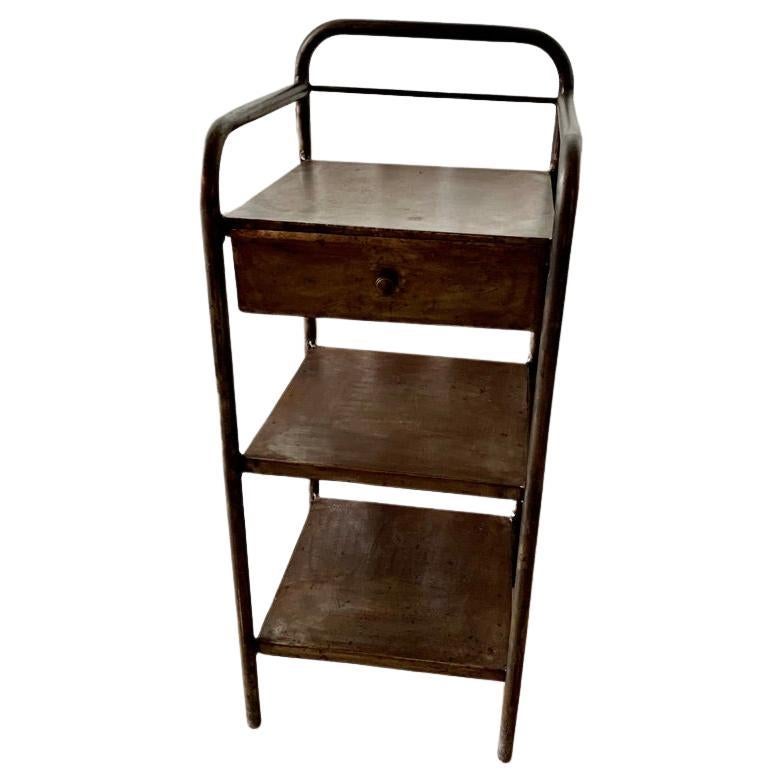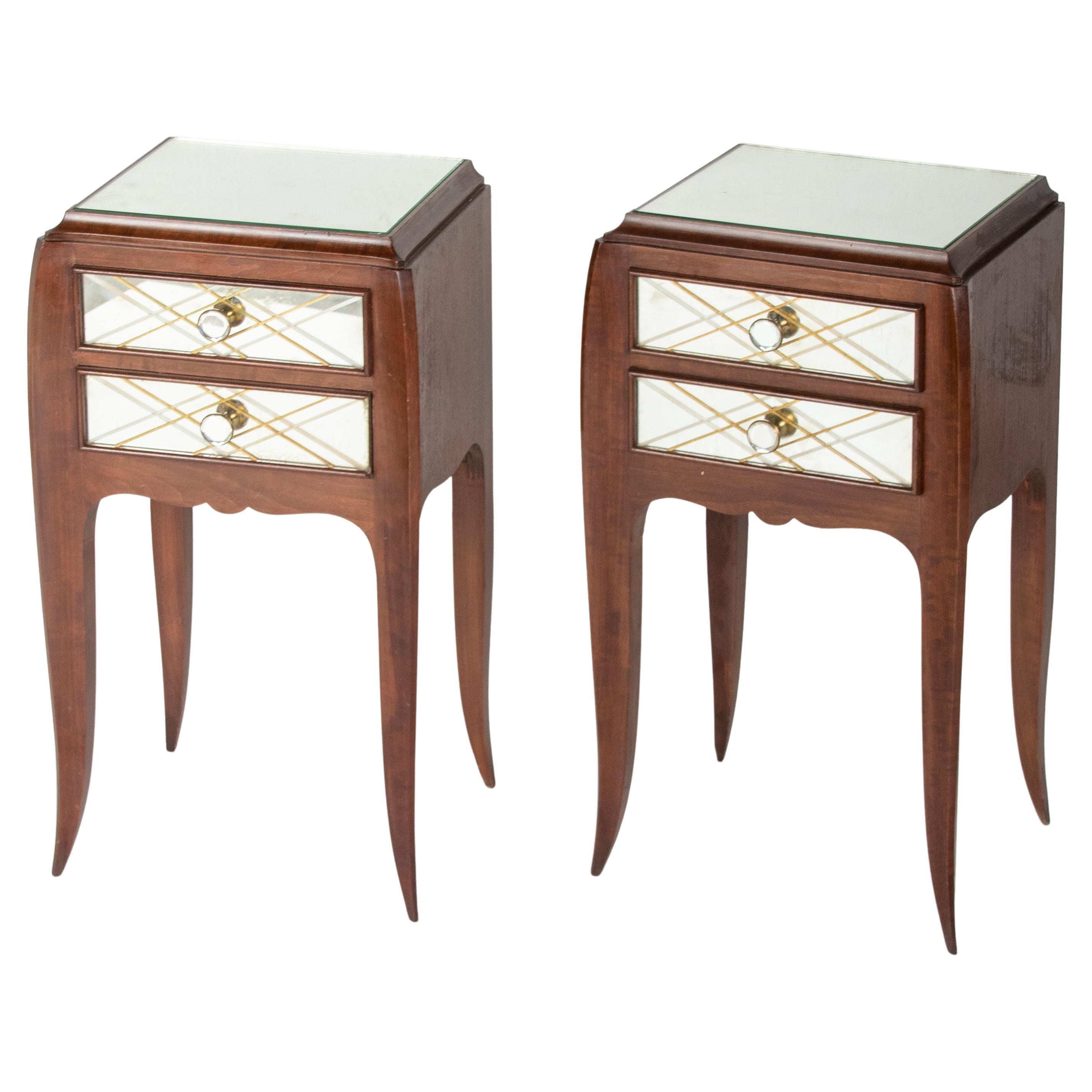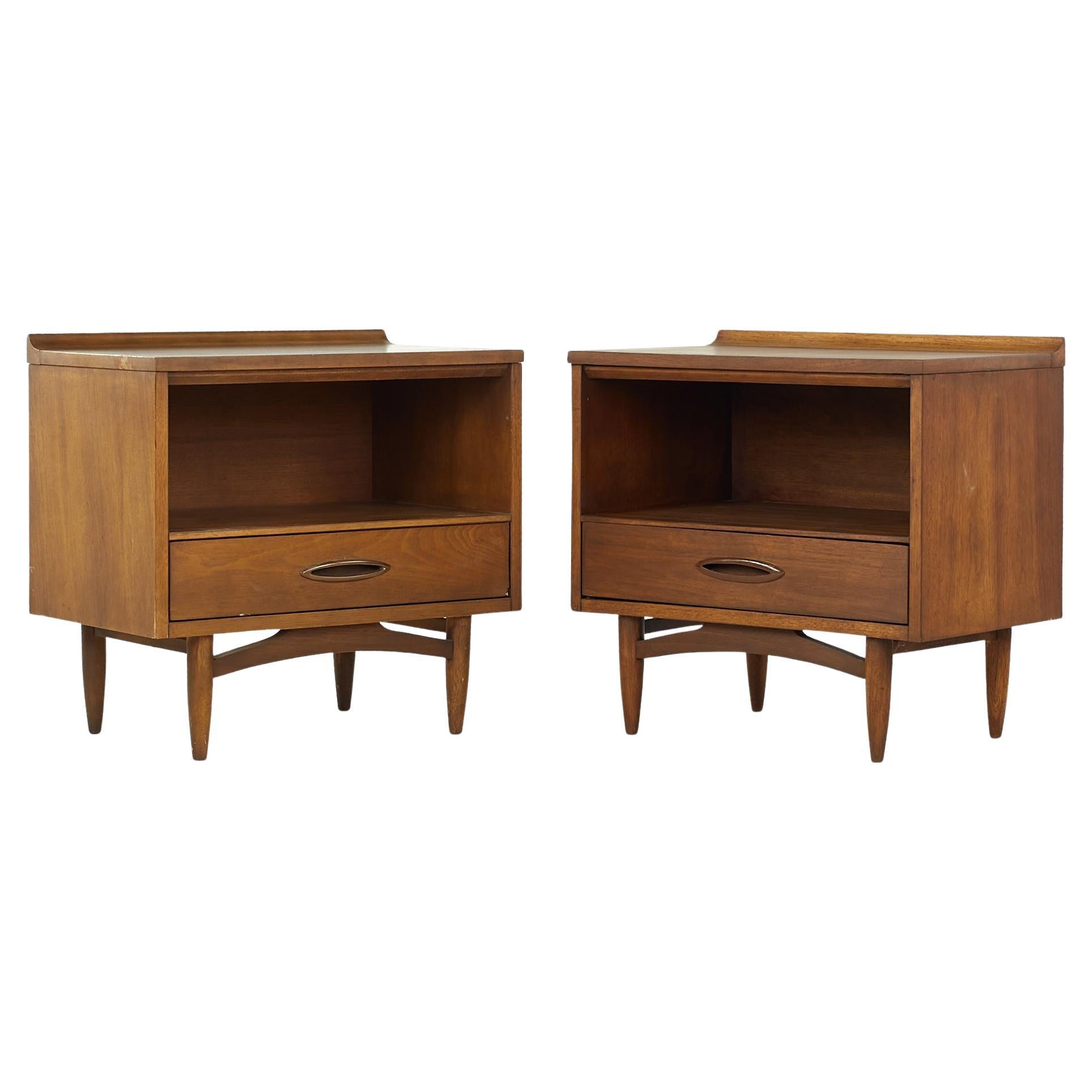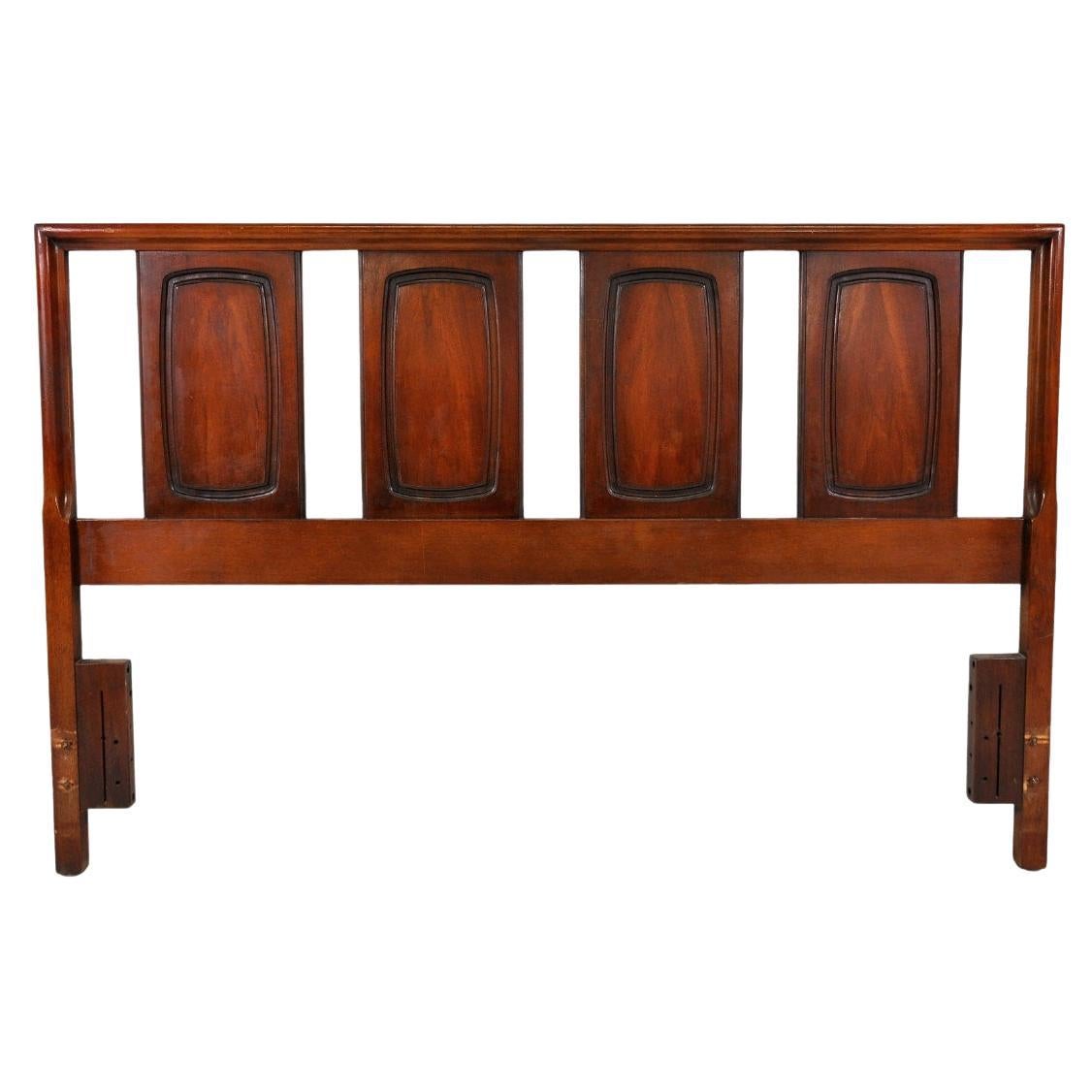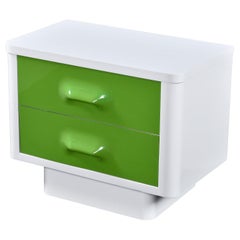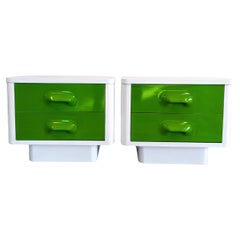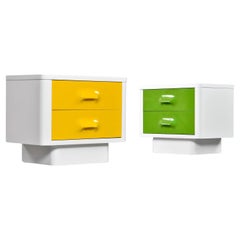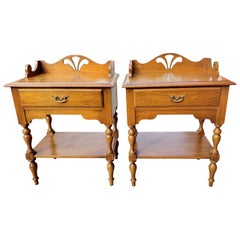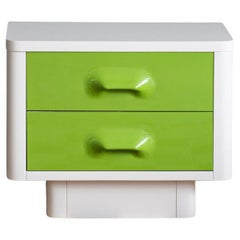
Green Chapter One Night Stand by Broyhill Premier
View Similar Items
Green Chapter One Night Stand by Broyhill Premier
About the Item
- Creator:Broyhill (Manufacturer),Raymond Loewy (Designer)
- Dimensions:Height: 21.66 in (55 cm)Width: 302.37 in (768 cm)Depth: 16.15 in (41 cm)
- Style:Space Age (In the Style Of)
- Materials and Techniques:
- Place of Origin:
- Period:
- Date of Manufacture:1970s
- Condition:Refinished. Wear consistent with age and use.
- Seller Location:성동구, KR
- Reference Number:1stDibs: LU9185236152652
Raymond Loewy
For those in the know, French-born American industrial designer Raymond Loewy is the “father of streamlining.” He is widely recognized as a pioneer of industrial design consulting — a creative powerhouse who took aim at cluttered designs and simplified them. Loewy left his mark on everything from toothbrushes to trashcans to spacecraft interiors. He designed cars, worked in illustration, and crafted comely dressers and other furniture.
Loewy was born in Paris, France. At age 15, he designed a model airplane that was powered by rubber bands. It won the James Gordon Bennett Cup of 1908. Loewy patented the model kit for this plane by the following year and saw brisk sales. With his savings, Loewy was able to study at the University of Paris and then at Ecole de Lanneau, where he earned an engineering degree in 1918.
Loewy moved to New York City in 1919 and found work as a window designer for the department stores Macy's, Wanamaker's and Saks and as a fashion illustrator for Vogue and Harper's Bazaar. Loewy’s big break in industrial design came in 1929 when he altered the Gestetner duplicating machine — removing jutting parts and encasing the moving works in an understated cover. It caused a sensation within the industry — and companies began to call on him.
Loewy designed packaging for Coca-Cola and revised the look of Lucky cigarettes. The “Loewy Look,” which referred to the designer’s efforts to strip a product of any unnecessary detail and streamline its appearance, began to characterize hundreds of products.
Loewy found clients in a dizzying number of companies. He did everything from retooling logos to redesigning products. His 1934 Sears Coldspot refrigerator was a sleek innovation that broke sales records. His Pennsylvania Railroad locomotive resembled a speeding bullet and was the darling of the 1939 World’s Fair. Loewy even reworked shapes for snacks at Nabisco. By the time World War II gathered steam, Raymond Loewy Associates — the industrial design firm he founded — had been operating in a number of American cities. When Time magazine featured him on the cover in October 1949 — Loewy was not shy about publicity — his profile soared.
Loewy worked with Studebaker for decades. The success of their 1953 Starliner coupe was due to his revolutionary design, while their 1963 futuristic, fiberglass-bodied Avanti, which came with advanced safety features and materialized at a time when the company was experiencing financial hardship, was his crowning achievement for the maker.
Returning to his roots in aviation, Loewy worked for NASA from 1967 to 1973 on the interior design of the Skylab space station. He was also involved in the interior designs of the Concorde supersonic jet and Air Force One. Loewy delighted in creating furniture and collaborated with manufacturers such as Mengel Furniture, Rosenthal and Doubinsky Frères. In the 1970s, Loewy and his wife shuttered their businesses and retired in France.
On 1stDibs, find vintage Raymond Loewy cabinets, serveware, seating and more.
Broyhill
Founded during the 1920s, the Broyhill Furniture Company was one of the stalwart North Carolina makers of mid-priced, traditional wooden furnishings, and it served American families well. The Colonial Revival style — chairs with turned legs, beds with split pediment headboards — had always been the company’s stock in trade. But the vintage Broyhill bedroom furniture, dressers and cabinets of the postwar era are quite popular with today’s fans of mid-century modern design — particularly those who enjoy more flamboyant stylings, such as those of Adrian Pearsall.
For collectors of a certain type, Broyhill is most admired for its brief foray into the contemporary furnishings of the late 1950s and ‘60s. In 1957, responding to changing tastes, the firm launched its Broyhill Premier line with the Sculptra series.
Sculptra pieces featured decorative molding with a square-within-a-square motif and horizontal cat’s eye-shaped drawer pulls. Five years later, Broyhill introduced the Brasilia furniture group, inspired by the Oscar Niemeyer architecture for the brand-new Brazilian capital. The collection made its debut at the Seattle World’s Fair.
The cabinet door fronts of vintage Broyhill Brasilia pieces feature moldings based on the sweeping colonnades and parabolic curves of such buildings as the Palácio da Alvorada (“Palace of the Dawn”), the presidential residence. As you will see on 1stDibs, Broyhill created a striking and spirited line of furnishings that will make a happy keynote in any Atomic Age-inspired interior.
Ohio retailer Big Lots acquired the rights to the Broyhill name and related trademarks in 2019.
Find vintage Broyhill tables, credenzas, seating and other items on 1stDibs.
You May Also Like
Vintage 1970s American Futurist Night Stands
Plastic, Hardwood
20th Century American Other Night Stands
Plastic
Vintage 1970s American Futurist Night Stands
Plastic, Hardwood
Mid-20th Century American American Classical End Tables
Maple
Vintage 1960s American Mid-Century Modern Sofa Tables
Oak, Walnut
2010s Hepplewhite Night Stands
Mahogany
